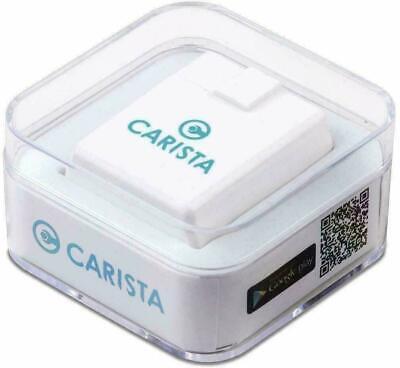It's in the chemistry as I understand it and the difference between how LFP and older Li-Ion respond to being charged to 100%.
OK, we're in agreement so far.
LFP cells in a pack when fully charged just stop charging without harm and other cells in the pack carry on absorbing charge,
Both LFP and ternary (NMC, NCA etc) chemistry cells will absorb energy if over-charged. When LFP first came out, they actually stated the fully charged voltage as about 4.2 VPC (Volts Per Cell), with the never-exceed voltage as about 4.6 V (from memory; that was before 2010). But they soon worked out that there is little to no extra energy stored above 3.6 V, and the degradation became intolerable above 3.6 V, so that was the new recommendation. A few chargers still aim for 3.65 VPC, so that every cell becomes full, and assuming that the BMS will pull the higher voltage ones back to about 3.6 V with a bypass resistor or other technique.
so naturally, when charging the pack to 100% the pack is balanced.
Not at all. Even though there is little energy above the somewhat arbitrary 100% point, some will be charged to say 100.3% on that scale. There is no magic process that levels them off at 100%, even if the BMS doesn't report higher than 100%. So they still need balancing, which MG are calling equalising (see below for how this causes confusion).
On the other hand, Li-Ion Packs you have to stop charging the pack when the BMS sees the highest cells in the pack reach max voltage, since to continue"Charging", would be damaging to the highest charged cells.
The above is actually correct, because LFP cells are Li-Ion cells. But I'm pretty sure you meant to say only ternary (NMC etc) cells will "continue charging". They all do. Some react more violently than others to over-charging.
Balancing is a process which starts after the main charging session finishes and is a selective low rate charge focused on the cells in the pack or groups of cells in the pack quite often that had been left behind as it were and have a lower voltage/SOC.
I agree, except that actually it's easier to focus on the ones with the highest voltage, either burning off energy in resistors, or attempting to transfer that energy to the cells presently showing lower voltage. I get the impression that the schemes to transfer energy are a bit gimmicky, and not practical at EV pack size, so most cars use resistors, affecting only the higest voltage cells.
It is necessary for Li-Ion packs because repeated charging cycles without balancing will increase the SOC differential between the best and the rest.
Again, this is true of all chemistries.
its impact on the range is that the BMS reports Empty when the cells with the lowest SOC reach their lowest discharge point and not when the majority of cells do. To continue to discharge a cell beyond will cause terminate damage to that cell.
Agreed.
So what I'm saying is that the LFP pack probably doesn't really benefit from any extended time connected after the pack reaches 100% unlike [ ternary ] Li-Ion.
What I'm saying is that there is nothing magical and auto-balancing about LFP cells, and they need the balancing just the same. Failing to balance will impact actual range just the same as any other chemistry. It may be that LFP cells, being a somewhat simpler chemistry, are easier to manufacture with tight tolerances, but it seems to me that even if they match very well when made, they will eventually experience different environment (one end of the pack is in the sun, for example), so that balancing will always be needed.
This is why if you build a DIY Pack with LFP individual cells you can disable the balance charge when configuring the BMS.
Supplementary Note:
"
3. Equalize Charge:
No equalize charge is required for the LiFePO4 battery. If equalize stage cannot be disabled from your charge controller, ..." (
DIY LiFePO4 Battery Pack )
Ah! This must be the source of the confusion. The "equalise
charge" referred to above is a special over-charging stage specifically for flooded lead-acid batteries. Lead acid cells actually DO have a (slightly) magical equalising property: when you over-charge them, they boil off water from the electrolyte, but mostly the acid remains in the cell. It's easy and indeed necessary to replace the water in these cells anyway, so it's no big deal. The equalise charge is several hours at a quite high charge voltage (e.g. 15-16 V on a nominally 12 V battery), which is well above the gassing voltage for those cells (14.4 V for nominally 12 V). So this is a very crude way of balancing the individual cells in a flooded lead-acid battery. Note that in a lead-acid module, like a car starter battery or even the auxiliary battery in our MGs, there is no access to the individual cells; only to the block of (for 12 V nominal batteries) six cells in series. Lead acid cells have such a short life that for the sealed versions, which these days is most of them, they don't worry about balancing at all.
So basically the equalise
charge referred to above is not the same as the equalisation
process that happens at the end of charging our cars. So this advice is NOT saying that equalisation (really cell balancing) is not needed for LFP chemistry cells. It's saying that if you have the facility to over-charge your battery, don't do that for LFP, only for lead acid. In the house battery world, ternary chemistry is still fairly uncommon, so it's not even mentioned in the above. But of course, if you do happen to have the equalise charge facility, you should not use it on battery composed of ternary cells either.
